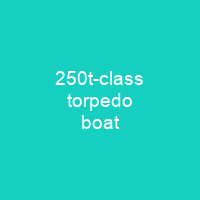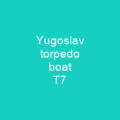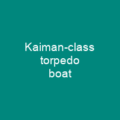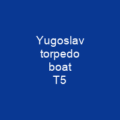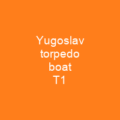The 250t Class: A Tale of Coastal Warriors
Imagine a fleet of swift, agile ships, designed for the high seas yet capable of coastal defense—such was the vision behind the 250t class torpedo boats. These vessels were built between 1913 and 1916 by three Austro-Hungarian shipyards to serve in the Adriatic Sea during World War I. But what made these ships so special, and how did they fare through the tumultuous years of war and beyond?
Design and Specifications
The 250t class was a marvel of naval engineering, built with Parsons turbines driving two propeller shafts. These boats were fast and agile, well-suited for service in the Adriatic. They had a waterline length of around 57-60 meters, a beam of about 5.8 meters, and a normal draught of just over 1.5 meters. Their Parsons turbines were rated at 5,000 to 6,000 shp, designed to propel the boats to a top speed of 28 knots.
Powering the Fleet
The T-group boats used AEG-Curtiss turbines with two funnels, while the M-group utilized Melms-Pfenniger turbines. All boats were powered by steam generated from two Yarrow water-tube boilers—one burning fuel oil and the other coal. This combination allowed for a range of 1,200 nautical miles at 16 knots.
Armament and Defense
The armament of these torpedo boats was impressive. They carried two Škoda 66 mm L/30 guns on anti-torpedo boat mounts without gun shields. The forward torpedo tubes were mounted in various locations, while the aft ones were positioned differently. Each vessel could carry up to 12 naval mines and a Schwarzlose M.7/12 machine gun for anti-aircraft work.
Service During World War I
The 250t class saw extensive service during World War I, undertaking various tasks such as convoy, escort, minesweeping, anti-submarine operations, and shore bombardment missions. They were part of the Austro-Hungarian fleet, sailing in a flotilla at the rear of a cruising battle formation.
Notable Operations
In September 1914, they patrolled off Sebenico and Istria without finding any Italian forces. In May 1915, Italy declared war on Austria-Hungary, leading to a bombardment of Ancona by the fleet. They participated in shore bombardment operations against Ortona and shelled a railway line between Ancona and Pesaro.
Challenges and Triumphs
The 250t class faced challenges such as inadequate funding, which made them essentially coastal vessels. However, they were still involved in significant operations like laying minefields outside Antivari harbour and supporting seaplane attacks on Ancona. Despite these efforts, some boats suffered losses or damage during the war.
Post-War and World War II
After the war, all 27 boats were transferred to other countries under the Treaty of Saint-Germain-en-Laye. By 1940, thirteen had been lost or scrapped. During World War II, five Greek boats were sunk by Axis aircraft, while one Romanian boat was lost and two performed escort tasks in the Black Sea before being taken over by the Soviet Navy.
Yugoslav Service
The remaining Yugoslav boats were captured by Italians, operated until their capitulation, then seized by Germans. Two survived, being destroyed or sunk by Allies. The two remaining boats were commissioned by the Yugoslav Navy after the war and served until the early 1960s.
Legacy of the 250t Class
The legacy of the 250t class is a testament to their versatility and resilience. From high-seas torpedo boats to coastal defenders, these ships played crucial roles in both World Wars. Their design and service highlight the ingenuity and adaptability required in naval warfare.

The 250t class torpedo boats were more than just ships—they were the backbone of naval operations during a time of great conflict. Their story is one of innovation, service, and survival, reminding us of the importance of adaptability in the face of adversity.
You want to know more about 250t-class torpedo boat?
This page is based on the article 250t-class torpedo boat published in Wikipedia (retrieved on November 29, 2024) and was automatically summarized using artificial intelligence.
